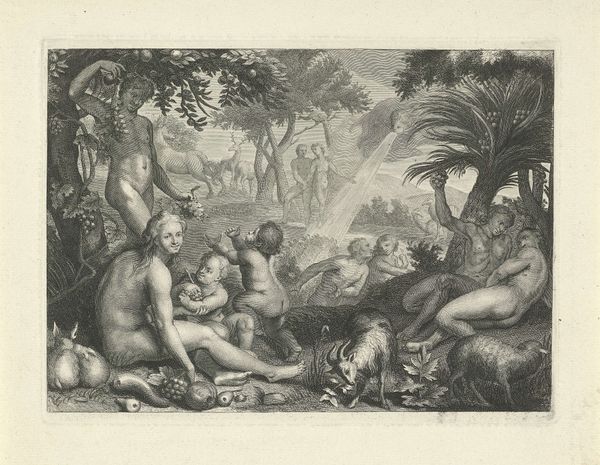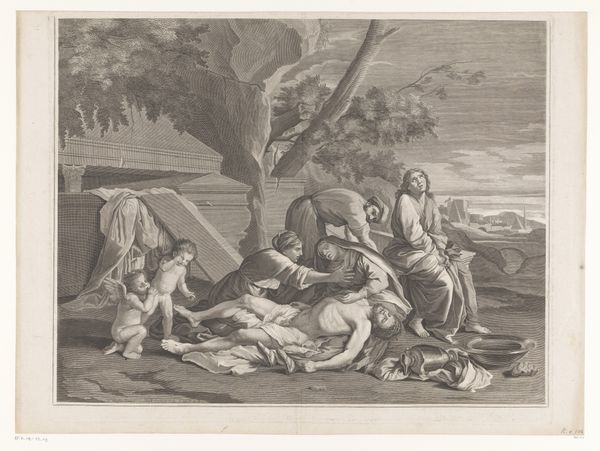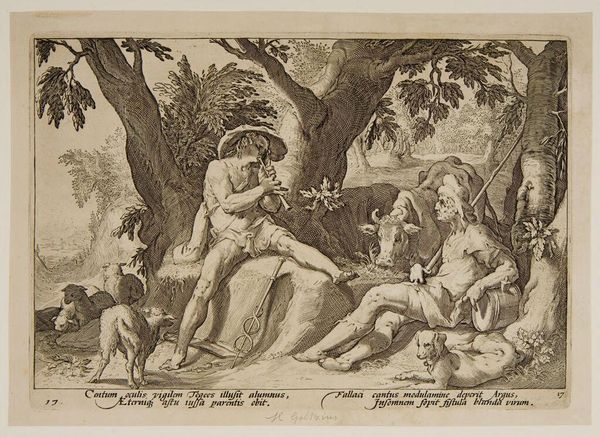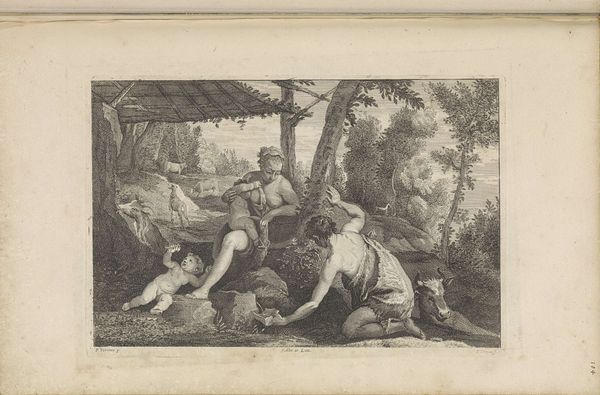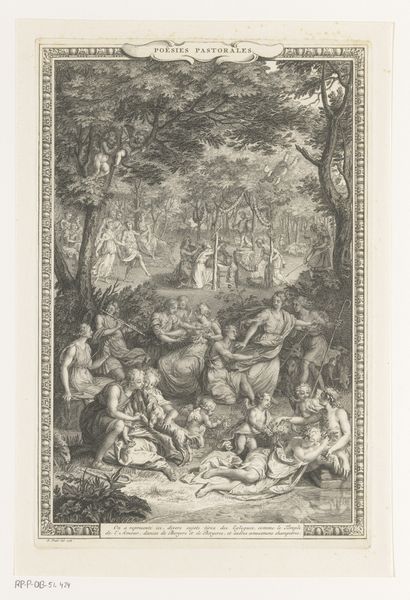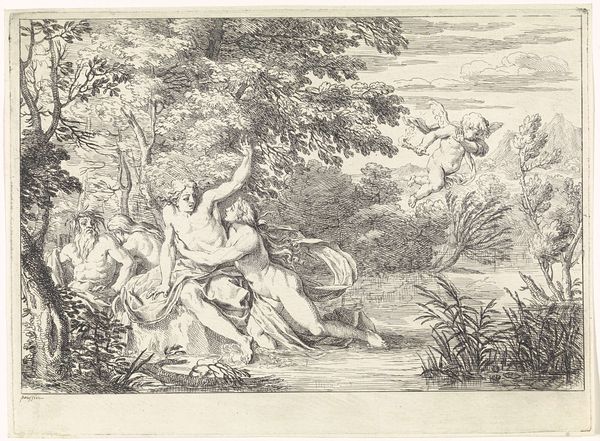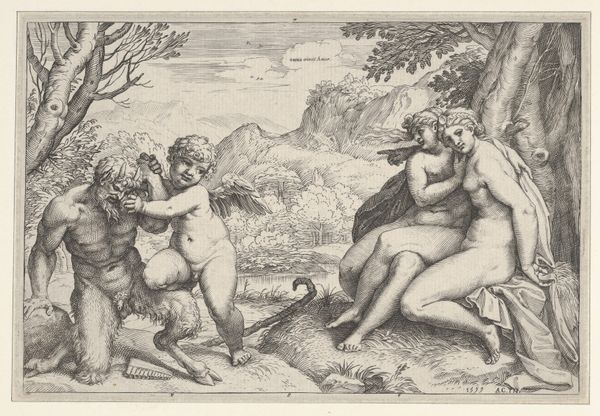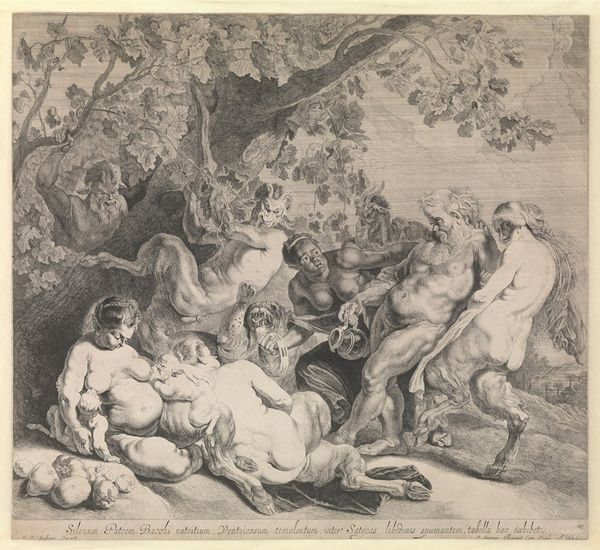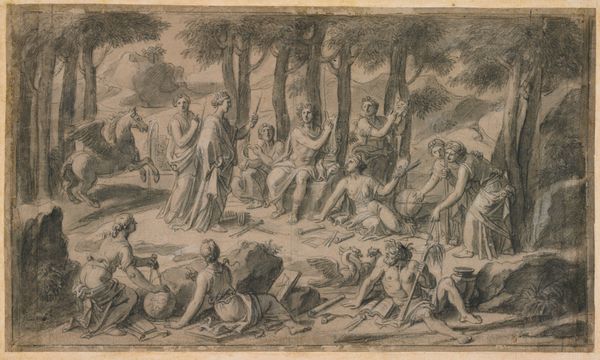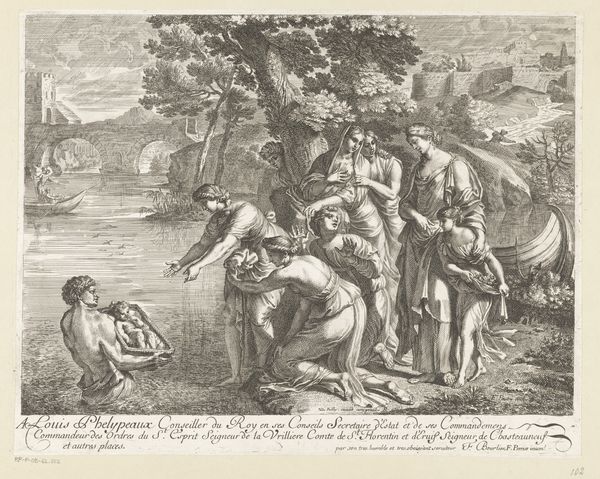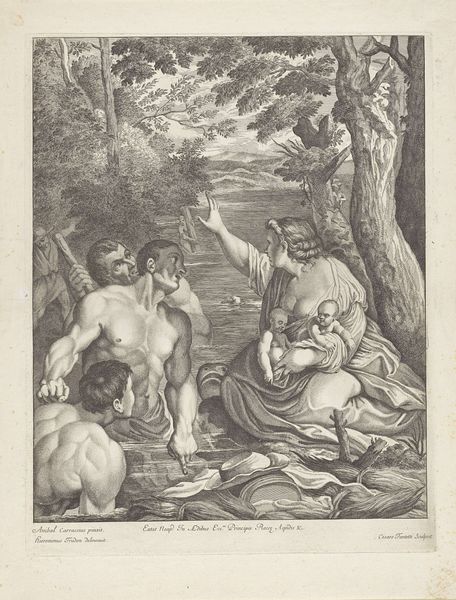
print, engraving
#
baroque
#
pen drawing
# print
#
figuration
#
genre-painting
#
history-painting
#
nude
#
engraving
Dimensions: height mm, width mm
Copyright: Rijks Museum: Open Domain
Theodor Matham created this print, “Diana Discovers the Pregnancy of Callisto”, sometime in the 17th century. It's made by incising lines into a metal plate, inking it, and then pressing it onto paper – a process known as engraving. Engraving, while technical, allowed for multiples and accessibility beyond unique artworks. The stark contrast between light and shadow is created by the varying depths and densities of the engraved lines, showcasing Matham's skill with the burin, the tool used for engraving. See how he uses the fineness of line to build up a complex scene, with areas of shadow giving way to pure white? In Matham’s time, printmaking was a vital industry, a kind of visual manufacturing that allowed for the widespread distribution of images. The print is not just a piece of art; it's also a product of labor, skill, and technology, reflecting the social and economic landscape of its time. Appreciating the labor-intensive techniques of engraving helps us to move beyond mere aesthetic appreciation.
Comments
No comments
Be the first to comment and join the conversation on the ultimate creative platform.
